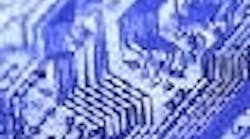I RECEIVED a call from a colleague in Arizona one mid-week morning, asking what company he should look into for control drawing software. He was using AutoCAD, and said, along with the licensing costs associated with the product, he was amazed how much training one needed to get a drawing completed or edited. This meant there were only a chosen few in his company whod be able to make required changes to drawings.
But its a standard, I said. It seems this really didnt matter to him. He was on a mission. He also lamented that most products need AutoCAD to run on, meaning that first you had to buy AutoCAD and then buy and install the control package as an add-on.
Autodesk previously bought Via Development, an Indiana-based electrical diagramming software company, and integrated its control-drawing product into AutoCAD. The product is now called AutoCAD Electrical 2006, though it still requires being a subject-matter expert to draw with it.
I suppose that Autodesk could now pull support for products that run on top of it, since it integrated Vias product into AutoCAD. Why support competitors?
Anyway, I had a look at AutoCAD Electrical 2006. The spreadsheet interface for generating PLC I/O drawings was really cool, and allows machine builders to generate and update I/O drawings very easily.
Each cell refers to a section of the I/O drawing, which includes import routines for common PLC databases. The I/O module itself is a separate entry, so if your customer uses, for example, Schneider Electric and not Rockwell Automation, then you simply change the module type, and re-generate the drawing. Control panel layouts, three-phase, and single-phase drawings are still done by the experienced AutoCAD Guy by placing pre-defined symbols onto the sheet.
|
"If the database has been createdeven if the drawing(s) are merely accurate, by-hand sketchesI think a non-technical person could draw the sheets." |
I also wondered why no company had used an existing drawing engine like CorelDraw, or, in the past few years, Visio. After Microsoft bought Visio, it seemed to me that with a common interface and back-end technology, it should be a moderately easy thing to do.
Though I also suspect this migration might not be as easy as I imagine, there are at least two companies that have done it. Engineering Base (EB) from Aucotec Inc. is a play-on-words. As in a regular database, EB is a database of engineering proportions. My Arizona buddy pointed Aucotec out to me, and I was downloading a demo shortly after. EB is an SQL database-driven diagramming program, which you can use if youre familiar with Windows Office-type menus and toolbars, and normal Microsoft foundations.
Because EB is data-driven, you define all your devices for any or all machines, and then choose the ones you want or need for the current customer. In fact, each customer can be a project, just as every machine can be a unique project.
Once the devices are in the database, you populate a Visio drawing sheet by dragging and dropping. If the database has been createdeven if the drawing(s) are merely accurate, by-hand sketchesI think a non-technical person could draw the sheets.
Also, EB has its own development front end, and integrates the objects with the drawings using the SQL database engine. It becomes a task of picking and placing objects on a canvas. I didnt have to be the AutoCAD Guy.
A second product that uses Visio is Electra 2005 developed by Radica Software. It uses an Access database, as well as Visio directly, as the development environment. This product uses Visual Basic for Applications to control and guide you through the process of developing applications.
Each Visio stencil in Electra 2005 has macros attached to it. So, when you drop an object on the sheet, the macro code behind it populates the database, and ties the devices together.
The interesting part about these two programs is that one is German, while the other Malaysian. Both use run-time protection, so licensing issues need to be adhered to. EB works in a network environment better that Electra, and thus will be better for a real-time development environment.
I really didnt look at the mechanical side of things, where Im pretty sure that AutoCAD might still be best for those types of drawings.
If youre not an AutoCAD guru and/or want to get control drawings and layouts done quickly and inexpensively, it might be worthwhile to check these guys out.
| About the Author |




